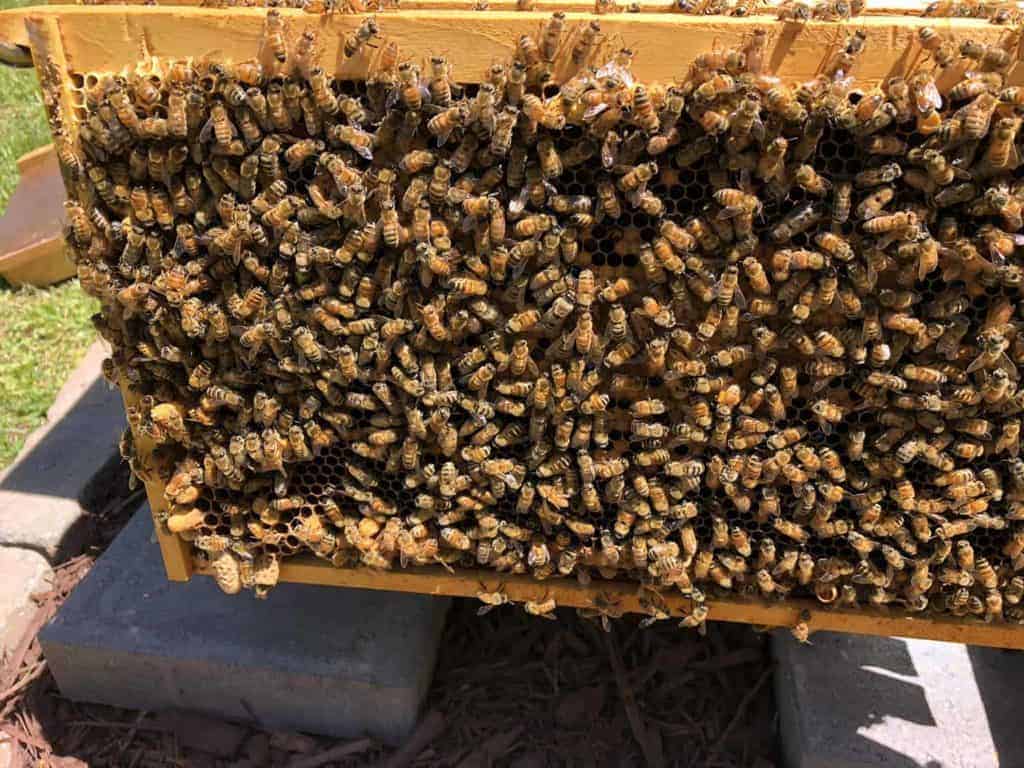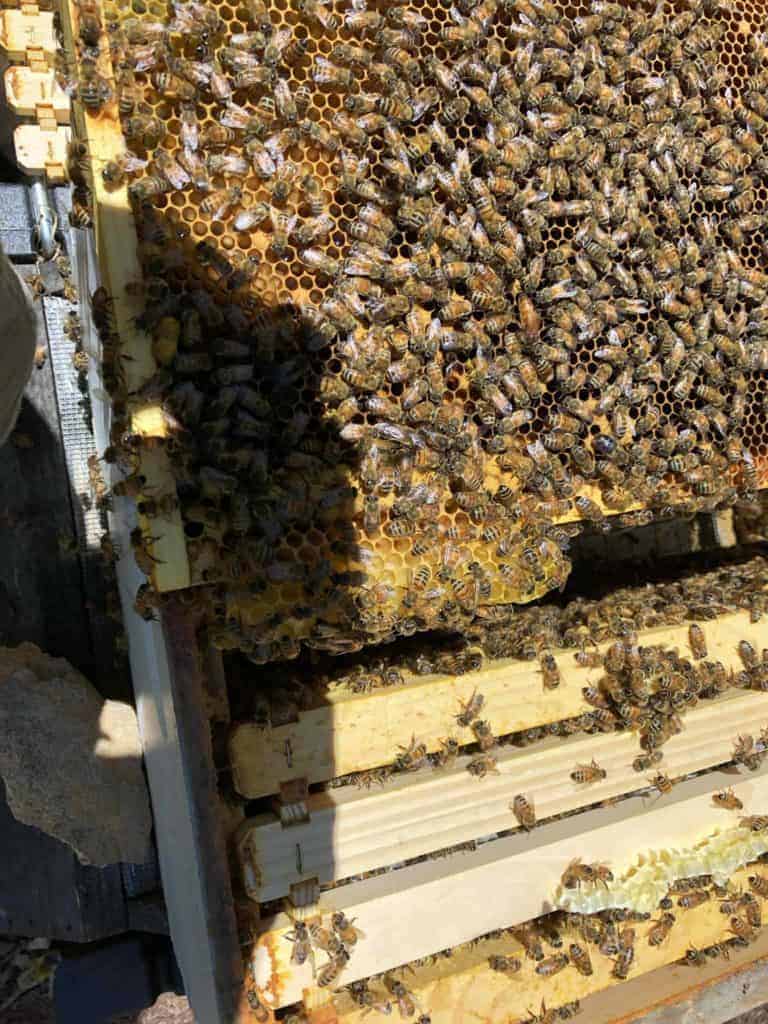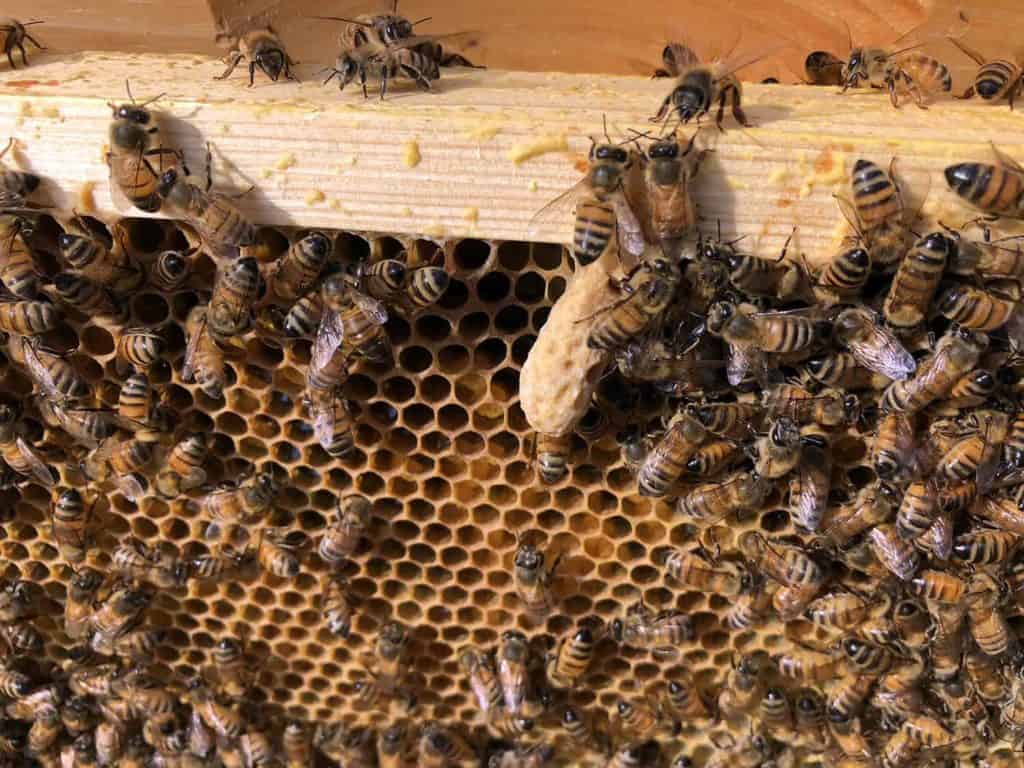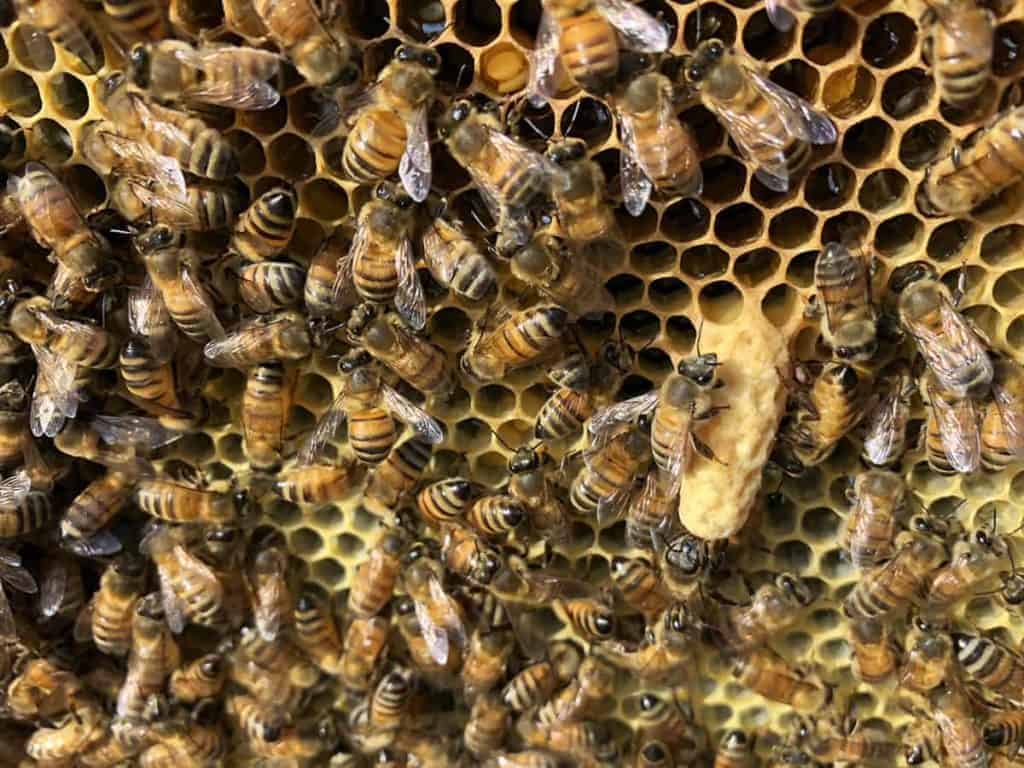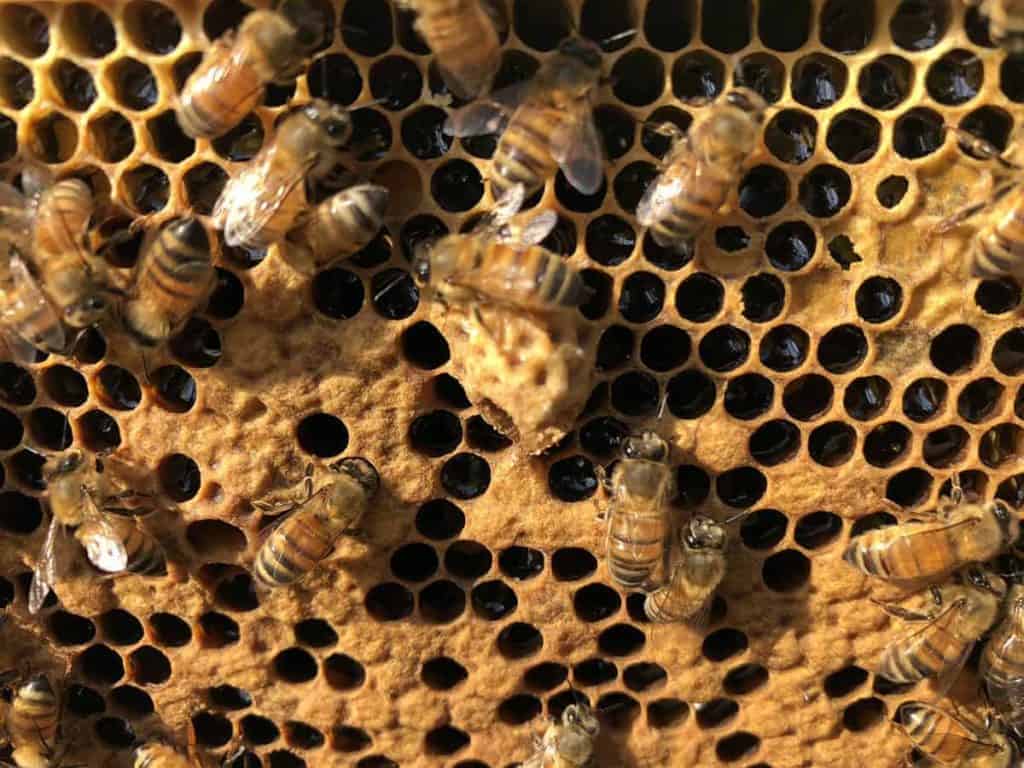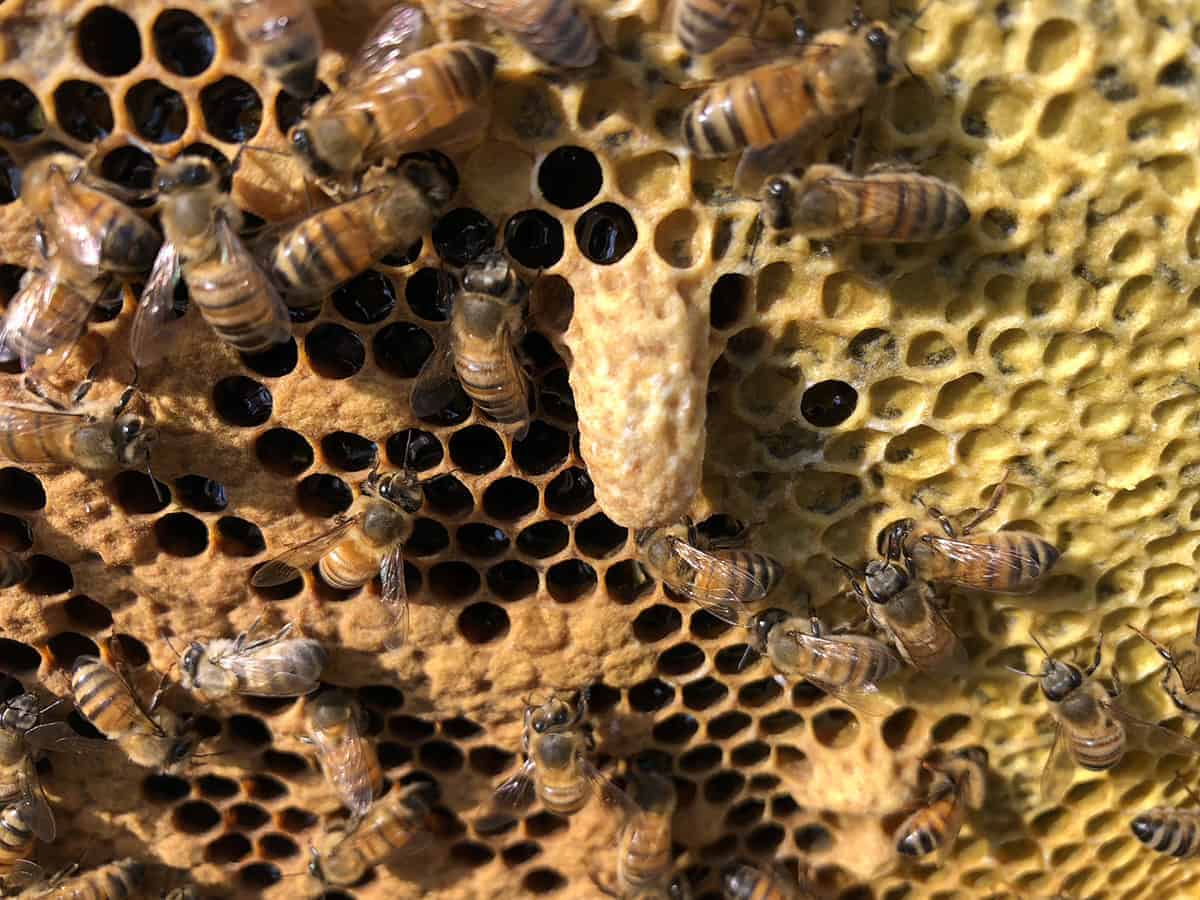Bee season is in full swing in western North Carolina with all the interesting developments that brings. Local beekeepers have reported swarms, including one my own bee mentor experienced. Luckily, our regional state bee inspector had been invited to his apiary to check things out and saved the day by collecting the swarm.
Since my last post, many changes have been occurring in my apiary, including a few surprises and a mystery. Since there is a lot to share, I am not going to focus on a topic other than to discuss my experiences and steps I’m taking to address them.
So, let’s get to the updates.
Hive Updates
Those of you who have been keeping bees for a while know that our bees often have ideas all of their own making that drive what we do and how we have to react to their decisions. We might be the keepers but I often think they really do love trying to outsmart us with the hive mind.
In those instances, some hives just seem to grow while others seem to delight in throwing delightful mysteries for us to interpret. In the past two weeks, I had been experiencing both quick growth and a delightful mystery.
Hive Asgard – A Developing Mystery
If you remember, I have had a hard time consistently located the queen in this Buckfast colony. In my last post that I related how these bees were more aggressive than I expected. During my last two inspections, the bees have attacked my exposed hands and stung me, forcing me to don my gloves.
This colony remains my only colony which I have to put the gloves on. What’s more, the stings are quite painful. I spent some time researching the demeanor of Buckfast bees and found that they are supposed to be quite docile and not aggressive at all. They were bred for disease resistance and honey production.
What’s more, this colony has guard bees that seem to watch in a perimeter around the hive and will follow you hundreds of feet from the hive buzzing around your face. One of them seems to enjoy flying right in front of your eyes. Some might find it endearing, but those not aware of what the bee is doing find it frightening.
Case in point, we have had some local teenage boys visiting the neighbors pond behind the house and not far from the beehives. One of them made the mistake of coming inside that tell-tale perimeter that the Buckfast colony has marked off as its own. Of course, out went one of the guard bees doing her thing. The young man made the fatal mistake of swatting at it and it stung him. Out of the hive issued a good number of bees flying right after him with him running up the back yard yelling that he was never coming back to this pond! While mildly amusing, it is not what I want happening in my apiary!!
So, I decided that I needed to mark the queen and get to work finding a replacement queen. But, while taking these steps, a mystery developed.
The Buckfast colony had plenty of space with two brood boxes, with comb being drawn in the second brood box. But, they were creating queen cups like they were going out of style. At first I thought they were attempting to swarm but I’m pretty certain at least one virgin queen emerged in between inspections (I missed the cup!) and she disappeared. The colony didn’t swarm and nothing changed.
At first, I attempted to located a replacement Buckfast queen but all of the queens that were readily available for a quick replacement were located in Florida and Texas. We’re pretty sure that the point of origin for my Buckfast bees was Florida in prime Africanized bee territory and it is very possible that the queen had mated with at least one African drone. The colony wasn’t as aggressive as Africanized bees but it certainly was and is more aggressive than any colony I’ve worked so far.
Reading about Buckfast colonies from this region indicated aggressiveness in the bees, which means they were hybridizing with something that was increasing their aggressiveness. The best breeding stocks of Buckfast bees appear to be in Canada. So, the amount of time it would take to get one of those bees to me, even with a supplier that has all the proper licensing to ship to the United States, was going to be a delay.
I decided that the only thing I could do was requeen with a more readily-available queen. I opted for a VSH Italian queen which my bee mentor picked up for me and dropped off in my apiary. He wanted to capture my suspect queen and test her in a colony on his more isolated apiary, to see if she created an aggressive colony for him as well.
When we opened the colony, we discovered four more queen cups. One was close to being capped and the rest were filled with royal jelly. I tore them all out before installing the queen cage. This time, my bee mentor suggested that I not puncture the candy to make the bees take a little longer in releasing the new queen. I agreed given that this colony has been so busy creating queen cups.
After completing this task, I positioned the queen cage and closed up the hive. Knowing that I would be gone for a week on vacation, I opened the hive back up on Saturday to see if the queen had been released. It was a good thing that I did this as there were five more queen cups in various stages of development. In fact, there was one capped cup which when I removed the cap proved to be ready to release its occupant. A virgin queen came crawling out of the cell. I destroyed her as I do not trust the genetics from the queen I had replaced.
As the bees had only a small amount of candy left before they released their new queen, I completed my task of destroying queen cups and cells and closed everything back up. I’m hoping by the time I return on Friday that I’ll have a productive queen in that colony.
So, the mystery that my bee mentor and I really haven’t resolved is whether or not the colony was building to a swarm (it really wasn’t congested enough for that!) or if in reality it was attempting to supersede its queen. We are leaning towards the latter solution since we found a dead virgin queen outside the hive.
Hopefully, a healthy, productive Italian queen will quickly take control and replace the more aggressive workers with thousands of her own brood. So, my exciting experiment with Buckfast bees is a bust for this season. I will have a hive of Italian bees in the next month or so. My plan is to try and get a Canadian Buckfast queen next season and replace one of my queens and see if things work out better.
I refilled the top hive feeder prior to departing on my vacation and took sugar syrup to the new beekeeper I’m mentoring who will check the syrup stores on Tuesday and Thursday.
Hive Florence
Hive Florence has been slowly recovering from a tough winter. After having to destroy a queen and replace her, I’ve been monitoring this colony closely. My new Carniolan queen, Lucrezia, has settled into her new home and is busy repopulating the hive.
The colony has tripled in size over the last few weeks and while still not at what I would consider full strength it is well on its way. There were plenty of eggs and I even got to watch Lucrezia lay an egg while I was inspecting the frame she was on. After placing her back in the lower brood box, I placed two strips of Formic Pro on the hive to treat for Varroa Mites. I have noticed two drones with deformed wings in this colony and am taking no chances this season with Varroa Mites.
I replaced the upper brood box as well as the medium box which contains significant amounts of honey stores. The colony has plenty of pollen and plenty of honey. With the honey flow coming soon, I placed a queen excluder atop the medium box and placed two new honey supers on the colony. I also removed the top hive feeder.
After replacing the inner and outer covers, I ratchet strapped the hive together. Hive Florence will not be inspected during the honey flow as you don’t want to disturb the bees in their process of making honey. If all goes well, the colony will continue to grow while also creating some honey for me to harvest this season.
Hive Rome
Hive Rome has taken off in the past few weeks. While not to maximum strength and size yet, it is fast growing towards full strength. I performed a split a few weeks ago, to break a building swarm. When I opened the hive for this inspection, I discovered some swarm cups but the queen had ignored them all and none were occupied. I tore those out and continued my inspection.
The colony has plenty of pollen and honey stores with honey being heavily populated in the medium box. But Luna has been busy in all the boxes, with capped brood in all three. When all the capped brood I found emerges, the colony will likely be nearing its peak size. There were also plenty of cells with newly laid eggs.
Luna is proving to be a quite prolific Italian queen. She is my other VSH Italian queen installed this season. After finding her and verifying her health, I placed two strips of Formic Pro atop the frames and then placed the second brood box atop the colony and also replaced the medium box. I put a queen excluder atop the medium box and placed one honey super with partially drawn comb and a new honey super atop it and closed everything up.
I ratchet strapped the hive before moving on to the next colony. As with Hive Florence, I won’t be able to perform any more inspections of this colony until after the honey flow is over. I’m going to miss checking on these bees.
Hive Acquitaine
My split of Hive Acquitaine a couple of weeks ago seems to have alleviated the swarming impulse. But, I performed one last check prior to placing the honey supers on this colony. The workers have been active on the five new frames I had placed in the colony and have been busy using that new comb. A good portion of it was used by Eleanor with one frame being filled nearly full of freshly laid eggs. There were eggs, larvae and tons of capped brood.
Additionally, the colony has stocked up on pollen and honey stores for their own food. As this colony has gone a bit off level since I installed it, I shored it up with a second block which pushed a little off level in the other direction but not overly much. As it settles, it will end up about where I want it. This inspection took a while as I wanted to check every single frame and had to take all the boxes off the colony to perform my work of getting the colony off its extreme lean.
After completing that process, I began reassembling the hive. In this process, I had a mishap and dropped the frame Eleanor was on. Luckily, it dropped on its corner edge. But you can imagine how sickly worried I was because she was nowhere to be seen.
So I stepped back away from the frame and began searching the ground with my eyes. Incredibly, she came crawling out from behind the hive. I reached down with my hand and she crawled up in it. I lifted her up to the hive and she crawled off on a frame and into the hive. Needless to say I was relieved to see her in good condition because I was sure I had killed her.
I replaced the Formic Pro strips that I had already placed on this colony and then reassembled the hive. This colony is at full strength or very nearly full strength and will be burgeoning with workers during the honey flow. I placed a queen excluder on the medium box and then placed one honey super with drawn comb and a new honey super atop it before closing up and ratchet strapping the hive.
I have no doubts that this colony will produce honey very quickly. It is hard to believe that this summer my wait for honey production is about to be over.
Naturally, with the mishap with Eleanor, I’m concerned with not being able to inspect this colony for weeks but I’ll trust that she is happy. I will know pretty quickly if she isn’t well, as the activity will begin to dwindle in the hive. I don’t believe she was harmed as she was ambling along at a fair clip trying to find her way back to the boxes that were still not back atop the hive.
So with that moment of near heart attack over I moved on to check the two nucs.
Nucleus Colony #1
This colony contained Cornelia and was a split from Hive Rome. As I mentioned in my last blog post, I had located someone who wanted to purchase. Thinking though selling this colony and speaking with a fellow PerfectBee blogger, I determined that I needed to requeen this hive before I sold it. So, a week ago, I had purchased an Italian queen and installed her.
I euthanized Cornelia after thanking her for her service. She is floating in alcohol. I’ll relate a recipe for making your own swarm lure at the end of my blog, shared with me by Ron Lane.
I was curious to see if the bees had released their new queen. They had definitely released the queen and she was already laying in her new colony. So, the re-queening was a success and the colony is ready for sale.
The man who was purchasing the nuc hasn’t gotten his boxes together yet so I told him he could pick the colony up next weekend. If he doesn’t purchase it next weekend, I’ll be looking for a new buyer. I can’t afford to leave it in this nuc for two terribly long as it will start feeling crowded and will attempt to swarm. I refilled the top hive feeder before leaving on vacation.
Nucleus Colony #2
This colony is my split from Hive Acquitaine. I’ve been monitoring it to see how things were going to develop. This past week the colony went into hyperdrive. When I opened it to check progress, I found it full of bees.
I had placed a few frames of capped brood in with the frame of primarily eggs. The workers have put that frame of eggs to good use providing four of the most beautiful queen cells I have seen. They are full-sized cells as you can see in the pictures I took for this post. I closed the colony up and refilled the top hive feeder before leaving on vacation.
I won’t be inspecting this colony for another three weeks to give a queen to emerge and go on her mating flights. With any luck, I’ll have a mated queen from Eleanor’s genetic line. As Hive Acquitaine came through the Varroa Mite infestations that I experienced hardly phased, I want to make sure that I take advantage of those genetics. We’ll see if the colony is successful.
A Swarm Lure Recipe
Having to destroy a queen who has been productive and brought a colony through the winter is not an easy task. I have found that I become quite attached to these queens. Since I knew I was going to have to destroy Cornelia, I wasn’t looking forward to the task. She helped build the nuc that got dubbed Hive Rome up and established it into a full-working colony.
So, Ron Lane shared his swarm lure recipe with me. You can certainly purchase a swarm lure but Ron asked why not allow that queen to keep contributing to your apiary? Ron suggested using a bottle of Everclear to euthanize Cornelia. He pointed out that it would be near instantaneous and generally painless for her. Unfortunately for me, Everclear is not available in North Carolina. Who knew!?! I certainly didn’t.
So I improvised with a bottle of rubbing alcohol. Her passing was indeed near instantaneous. The concept is that the Everclear leaches queen substance that is still present in your queen. You can keep adding to your collection and use a cotton swab as a swarm lure. The alcohol will evaporate leaving the queen pheromones. Pretty nifty if you ask me.
I certainly felt a whole lot better about Cornelia’s passing knowing she wasn’t suffering. Yes, I’m a big softy!
Coming Soon
As you can see, things are really developing well in my apiary. Despite my worries this winter, I feel pretty fortunate with how things have turned out. And with things taking off like they are, I have to say I’m a pretty happy beekeeper.
For my next blog, I will continue to update you on progress in my apiary including a quick check of the upper honey super to see if there is activity.
But, given that I’ll have fewer inspections to do over the next few weeks, I’m going to talk about Bee City USA. My local beekeeping shop helped Asheville, NC, become a bee city. North Carolina is home to the largest number of bee cities and our county beekeepers club is working to make Waynesville a bee city. So, get ready as I’ll walk you through the ins and outs of what it means, how you do it, and what you can do to make this happen.
Until next time, Happy Beekeeping!
